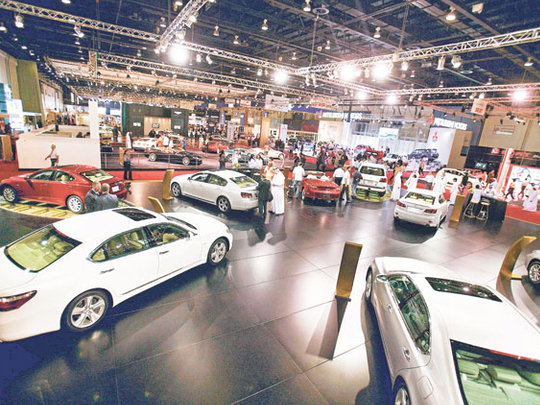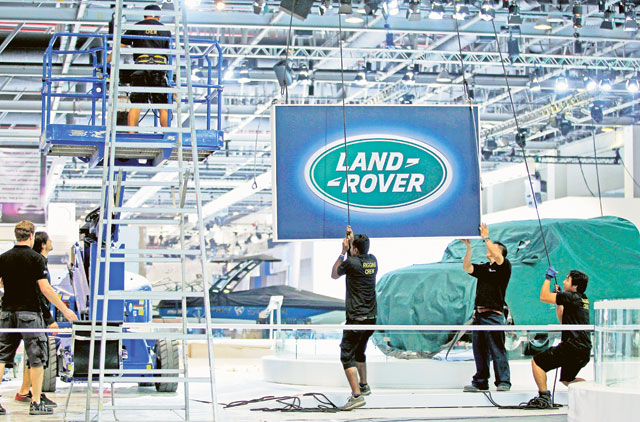
Dubai: It has been a tale of two quarters for the UAE's automotive sector this year, currently experiencing the highest volume growth in the Gulf markets. But the script has not necessarily followed a straight line.
If the first three months of the year saw new car sales in the UAE record their best performance since 2008, the subsequent two quarters recorded a sharp slowdown brought on by multiple factors, some related to the local market and others that had more global bearings. But, as with any good story, the automotive market is setting itself up for a strong finish to the year.
While that would make for an action-packed end to the year, more importantly it also gives legs to the momentum to carry forward into the New Year as well.
According to market sources, the traffic at local showrooms leading up to and during the Eid holidays was "nothing short of exceptional". Prospective car buyers had compelling reasons to make that trip to the showrooms with all of the major manufacturers lining up their 2012 model year offerings and with more to follow.
But more than that, dealership sources were talking about improving consumer confidence about the local economy as well as those of a more personal nature, such as job security. Any way one looks at it, the UAE's consumers are renewing their interest in new cars — and in higher numbers too.
The strong start to the fourth quarter should provide an impetus for overall new vehicle sales in the UAE to cross 240,000 units and even touch 245,000 or thereabouts. Dealerships are talking about a six to seven per cent growth for the year, which is a marked improvement on the three per cent recorded last year.
Improvement from 2009
Tellingly, this year's performance has put some more distance from the horror showing of 2009, when new car sales plummeted by more than 40 per cent.
The six per cent growth this year also contrasts sharply with the one to two per cent gains experienced by the rest of the Gulf markets. New car sales in Saudi Arabia are reportedly flat in a year-on-year comparison, while Qatar experienced some gains. But there are others where sales actually slipped into negative territory.
Indeed, the happenings in the Middle East since the start of the year have had their bearing on local car sales, but favourably so. "The auto market has definitely had benefits arising out of the regional situation from corporate relocations and allied reasons," said Michel Ayat, head of Arabian Automobiles.
"The biggest beneficiary from this trend has been the fleet sales business, especially since the third quarter."
While the Dubai International Motor Show, which opens today, in itself will not have a major say in pushing retail volumes up further, what it will do is provide a focal point for the much stronger position the local auto market finds itself in. It will also give prospective buyers a look into what they should be aiming for among the new models scheduled for launches in the early part of next year. (Of course, there will also be the concept cars that true auto aficionados can drool over at the show, but that's a different story altogether.)
What's been interesting this year is that new car buyers have been shopping around and not confining their interest to a handful of automotive marquees. While the Japanese brands dominate, South Korea's Hyundai and Kia are holding up quite well, while the US mega-labels — GM, Ford and Chrysler — have been chiselling away at gaining additional market share. As for the European makers, they are doing well, and particularly those that occupy the luxury end of the spectrum.
Retaining the individual rather than the corporate buyer is the core of the revised strategy that General Motors is banking on to gain more market share. "It's the key to sustaining profitability for not just GM, but our dealerships in the region," said John Stadwick, president and managing director of GM's Middle East operations, at a recent media briefing. "It's about earning market share rather than buying it through fleet sales."
Hit by natural disasters
At some level, the efforts were helped by the production fallout experienced by all the leading Japanese brands in the wake of the tsunami that hit Japan in late March. In recent weeks, another natural disaster — the floods in Thailand — could result in more production and shipment issues for the Japanese majors.
Up to September, the share of Japanese models in the overall car sales in the UAE dropped to 69 per cent from 71 per cent a year ago. While the erosion has been nothing near to dramatic, it still has given some space for manufacturers from other countries to seek leverage among buyers.
While a 6 per cent growth is impressive in what has been a flat market for the wider GCC automotive sector, local sales are still some way away from the 325,000 units sold during 2008, its best year ever.
Industry sources say that the high-water mark can be achieved again, but the process has to be a gradual one. "The numbers in 2008 were brought on by exceptional circumstances when there was so much bullishness raging in the marketplace," said a senior official at a local dealer.
"To regain those numbers will take lot of hard work from dealerships and manufacturers, but this way it will more sustainable."
Growth: Long way to the peak
While a six per cent growth is impressive in what has been a flat market for the wider GCC automotive sector, local sales are still some way away from the 325,000 units sold during 2008, its best year ever.
Industry sources say the high-water mark can be achieved again, but the process has to be a gradual one. "The numbers in 2008 were brought on by exceptional circumstances when there was so much bullishness raging in the marketplace," said a senior official at a local dealer.
"To regain those numbers will take lot of hard work from dealerships and manufacturers, but this way it will more sustainable."














